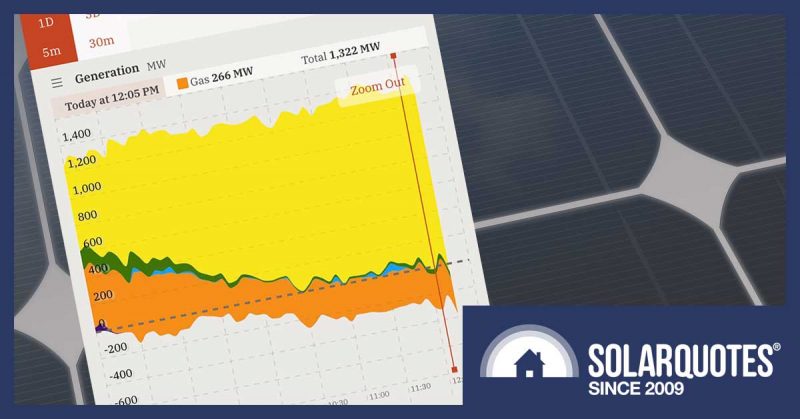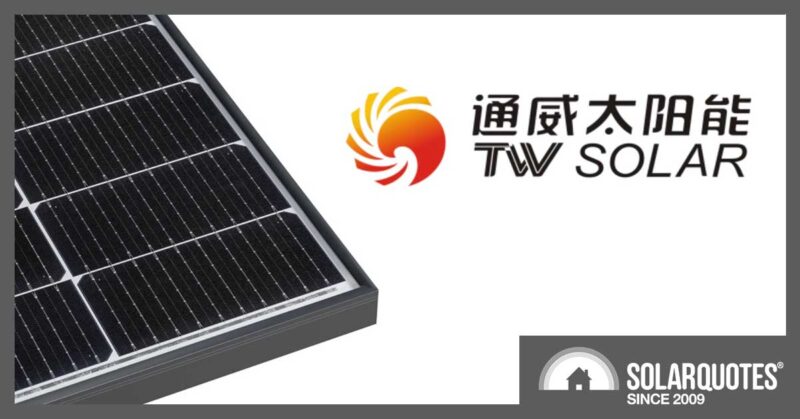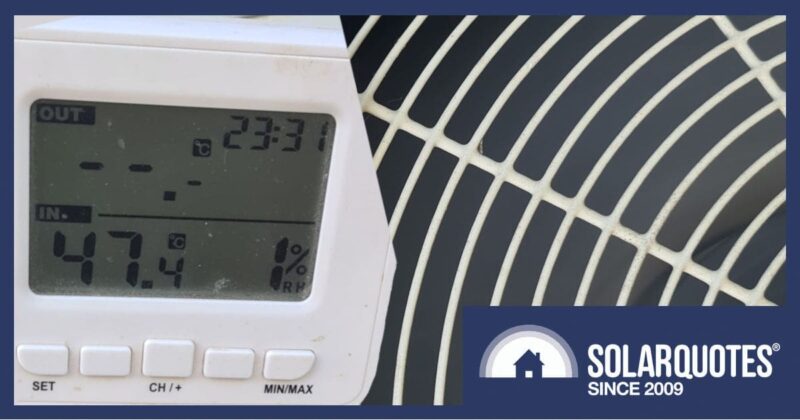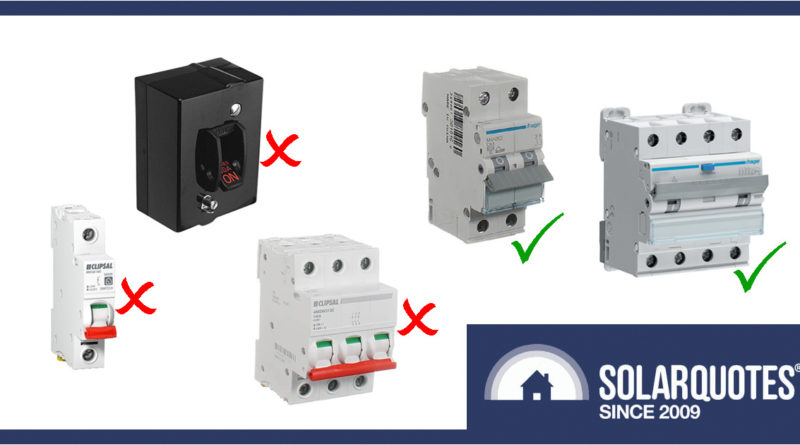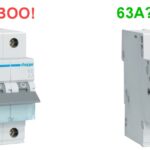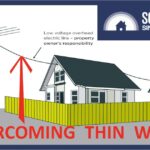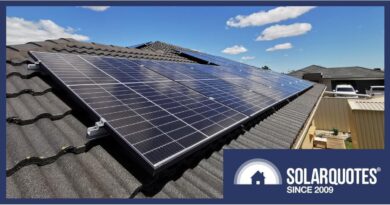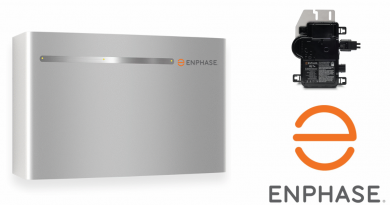New Rules In WA Screw Over Rural Solar, Battery & EV Buyers
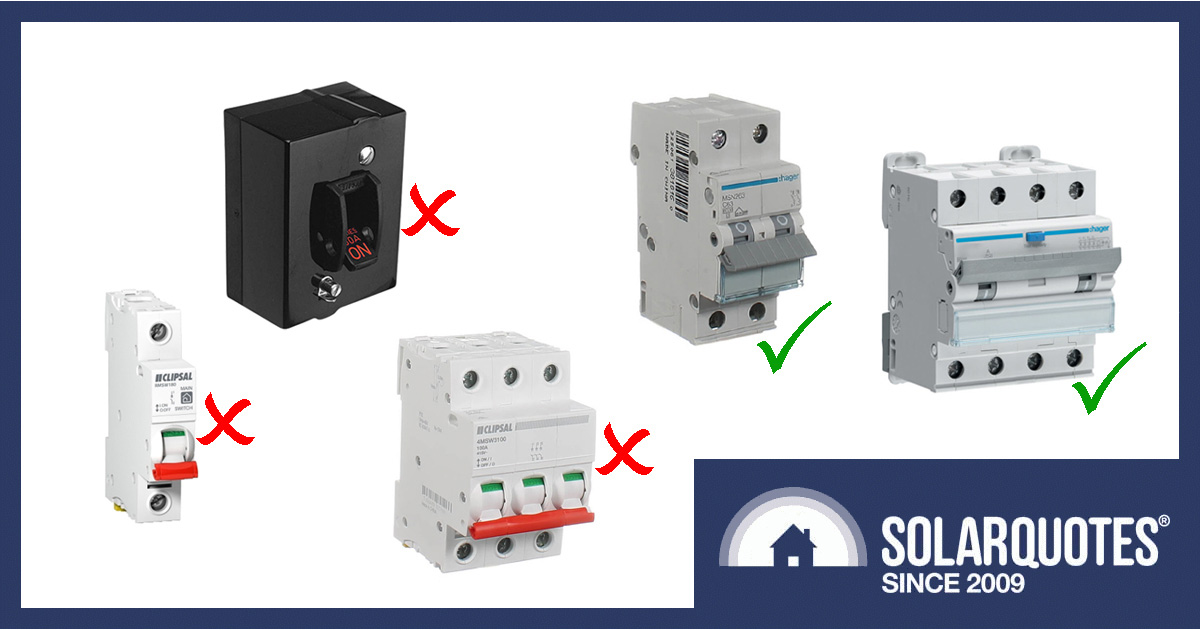

Earlier this year in Western Australia, a rule went into effect that all new or altered electricity network connections must have a circuit breaker as the main switch. In some cases, this circuit breaker will trip if you use more than a piddly 20 Amps in your home.
This is not retrospective. Existing homes must only comply with the new rules if they undergo a major electrical alteration such as installing solar, batteries or an electric car charger1.
Why Does This Rule Matter?
Replacing the main switch with a circuit breaker results in the enforcement of maximum demand limits for an electrical installation.
In other words, you need to watch how much power (i.e. Amps) you use at any one time, otherwise the main switch may trip, leaving your house without power until you switch stuff off and reset the breaker.
Metropolitan Vs Regional Vs Rural
The network service capacity in the Perth metro and major regional areas is different from our cousins in rural Western Australia. Unfortunately, as usual, the country cousins get the worst deal.
The following are network service capacities for Western Power and Horizon Power customers in WA, and therefore the mandated main switch circuit breaker sizes.
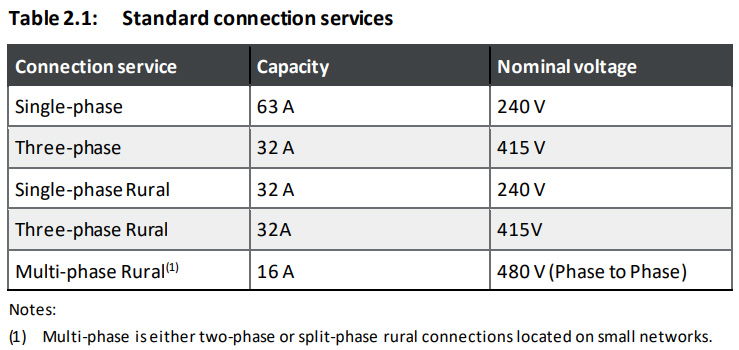

For those of you struggling to view the chart on your phone, that’s:
- Metro and major regional – 63A single phase, 32A 3-phase.
- Rural – 32A single phase, 32A 3-phase, 16A split-phase (now changed to 20A).
Is This Really A Problem?
Not for me. I’ve got 63 Amps and no electric car! But it could be a problem if you want to fast charge an EV, if you want your home battery to be part of a VPP, or for any household limited to a maximum of 32 Amps per phase at any one time. That’s not a lot of Amps to play with in the 21st century.
Hubby will be in deep shit if he tries to strike up the arc welder in the back shed and trips the main switch while wifey’s cooking the Sunday roast chicken in the oven2.
Even if your loads are balanced across 3 phases, you’ll have to be careful when using high-powered appliances such as air conditioners, water heaters and ovens.
I’d go as far as saying it’s going to make life more than uncomfortable for rural households on single phase running their air conditioners on a hot summer day while simultaneously trying to get on with their life.
People may even avoid installing solar panels, batteries, air conditioners, induction hobs, electric hot water or car chargers to avoid triggering the requirement on their homes.
Let’s Talk About Solar
Let me be clear. Your solar power system will never overload and trip your new main switch/circuit breaker. In fact, your solar power system will help to reduce your maximum demand by taking the strain off the grid during the daytime. Yay for solar energy!
You: “What about exporting my power?”
Me: “Same thing. Exporting power will not trip your main switch/ circuit breaker by overloading it.”
The largest inverter sizes allowable in Western Australia will only ever export at a maximum rate of about 21A per phase. This will be even less when you’re using power during the day. Yay again for solar!
But…
Clause 4.5.3 in Basic Embedded Generator (EG) Connection Technical Requirements tells us you might need an extra pole in your new main switch/circuit breaker if a Western Power AMI meter is used for DER (distributed energy resources) management purposes.
This will be connected to the auxiliary function terminal of an AMI meter. The auxiliary function terminal may be used for either direct or indirect control of your inverter.
Yes, big brother will have the ability to turn on and off your solar power system – but don’t worry. It’s hopefully almost never going to happen as Finn clearly explains here.
You: “What about when the sun goes down? Won’t I have to watch my usage more carefully or risk my power going out?”
Me: “Oh shit, I forgot about that. Um, would you like to buy a battery?”
Batteries – The Good And The Bad
Like solar inverters, home battery systems also have size limitations. Electricity network rules in Western Australia ensure that your battery will only ever charge and/or discharge at a maximum rate of about 21 Amps per phase.
Me: “In addition to size limitations, there are also time-of-operation limitation rules.”
You: “You’re f*ing kidding me.”
Nope. Western Power have that covered. See clause 4.3.3 in Basic Embedded Generator (EG) Connection Technical Requirements. The following is mandatory:
10am to 3pm – no discharging.
6pm to 9pm – no charging from the grid.
Good news. The above times are already configured into the battery setup by your installer so you don’t have to worry. But here’s where it gets tricky. The following is recommended but not mandatory:
6am to 10am – avoid charging if battery level is greater than 50%
3pm to 9pm – may discharge for net-load reduction.
9pm to 6pm – may charge or discharge as required.
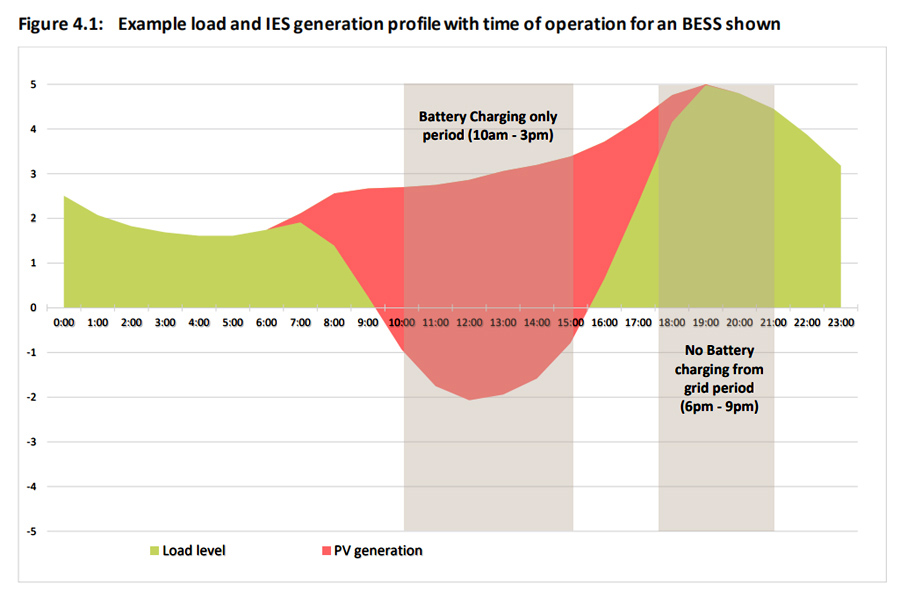

If your battery is configured to charge from the grid, you’ll have to watch your power usage at that time, otherwise you may trip your main switch/ circuit breaker. If your battery is charging at 21 Amps, that only gives a rural WA home 12 Amps (2.8 kW) to play with. A kettle and toaster together will pull more than that.
You: “So I’m damned if I do, damned if I don’t?”
Me: “Not necessarily. You are only likely to be on a 32 Amp breaker with 3-phase power, otherwise you’ll have a generous 63 Amps to play with. Although rural folks only get 32A on single phase.”
If you’re a 3-phase customer and you’re nice to your installer, he will lovingly and professionally balance your loads across all 3 phases and have a nice conversation with you about energy management. This would include configuring your battery to best suit your particular situation.
This battery stuff I told you about above will probably never be an issue… unless… you’re a country cousin living on a rural property with a 32A single phase or 20A split-phase supply. My heart goes out to you brothers and sisters, you are well and truly screwed. A kettle, toaster and bar heater all on at the same time will bring you to the edge of tripping that 32A breaker.
A Quick Word About EV Chargers
If you’re lucky or rich enough to own an electric car, then read on. If you’re wondering when to make the EV move, you better jump in for the ride too.
With regard to this discussion about the ramifications of the new main switch/circuit breaker rules in Western Australia, it’s best to think of your EV as a battery on wheels. When you plug it in at home, it’s subject to the same rules as a home battery.
Most dedicated single-phase and 3-phase home EV chargers are rated at 32 Amps per phase.
You: “32 Amps, ouch. That’s a pretty fine line as far as my main switch/circuit breaker is concerned. Won’t it trip straight way?”
Me: “No way. The clever people that make EV chargers thought of that. Read on.”
There are smart chargers on the market that can charge at different rates. You can also schedule charging for off-peak times, and in some cases, the charger will automatically switch off other large household loads for you when you’re charging.
For more on this subject, I thoroughly recommend you read Finn’s EV Charging 101 Guide.
Fortunately, Synergy (WA electricity retailer) is using the carrot approach rather than the big stick to tempt you away from peak usage times, and now offers a reduced tariff for off-peak electricity called Midday Saver. Do your sums.
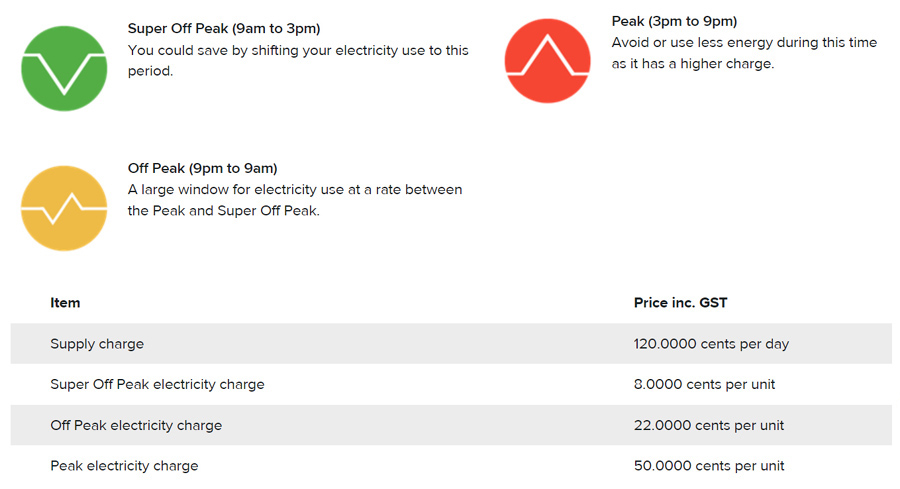

EV charging during off-peak times may save you dollars and go a long way to prevent accidental tripping of your now despised main switch/circuit breaker by reducing the chance other appliances are running while you charge your EV.
Under current rules, you need permission from Western Power to discharge an EV battery into the grid (V2G). You can apply here.
What Is The Rationale Behind This Main Switch Ruling?
This is Western Power’s official word – New Requirements for WA.
This is mine…
Electricity networks across the world have a colossal job in front of them trying to knock their respective grids into shape to accommodate an evolving decarbonised energy profile.
It’s not as easy as “let’s just put on lots of solar panels and drive around in electric cars”. There are very real engineering and technological challenges to work through, thankfully by people smarter than me.
My guess is that the main switch/circuit breaker ruling is a tool (a very blunt one) to help Western Power manage aspects of the energy profile and power quality by addressing load creep, phase imbalance and flattening the load profile curve.
They are very aware of the imminent wave of power-hungry electric vehicles coming to our shores and want to be prepared.
Unintended Consequences
I’ve already told you our rural neighbours have to make do with a measly 32A single phase or 20A split-phase supply while living in a modern electrified world. This is totally unworkable and really needs to be addressed.
The other thing that irks me is that although this ruling is for all new and altered connections, it mostly affects people installing solar, batteries and EV chargers. These are the very people driving the much-needed energy revolution. They should be rewarded, not penalized!
Double standards? Should this be rolled out across the state for all Western Power customers? Are solar power and battery owners somehow classed as high-energy users above others?
The last thing we want is for people to turn away from solar power, batteries and electric vehicles simply because of an ill-conceived regulation.
On the other hand, is this a good measure to keep everyone’s energy usage in step to help an evolving electricity network?
Me: (in a pirate voice) “Arrr, circuit breakers for everybody or none at all I say! Arrr you with us or against us?”
You: “Reply in the comments section below with or without pirate voice.”
Additional notes
After this article was written, a Western Power spokesperson reached out with the following response to my earlier communication:
“Western Power is aware of concerns raised by the electrical industry on the adequacy of the standard regional and rural supply allocation as customer energy needs change. In response, it is reviewing and assessing the opportunities, risks, and consequences of alternative options, and will provide an update to stakeholders by the end of the year.”
Footnotes
- You can get the rule straight from the horse’s mouth by reading the Western Australian Service and Installation Requirements (clause 11.1.2 and 11.6.4.3) and Basic Embedded Generator (EG) Connection Technical Requirements (clause 4.5.3). I wouldn’t recommend reading the whole thing though, because you won’t get through in one sitting. To be honest, many Western Australians working in the industry have not even read these.
- or vice-versa
Original Source: https://www.solarquotes.com.au/blog/wa-circuit-breaker-rule/
